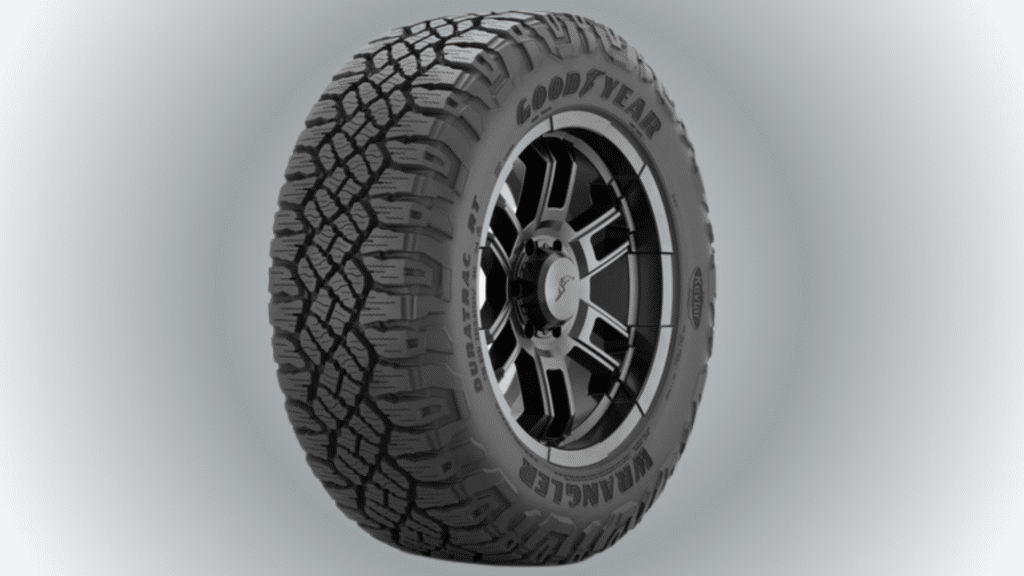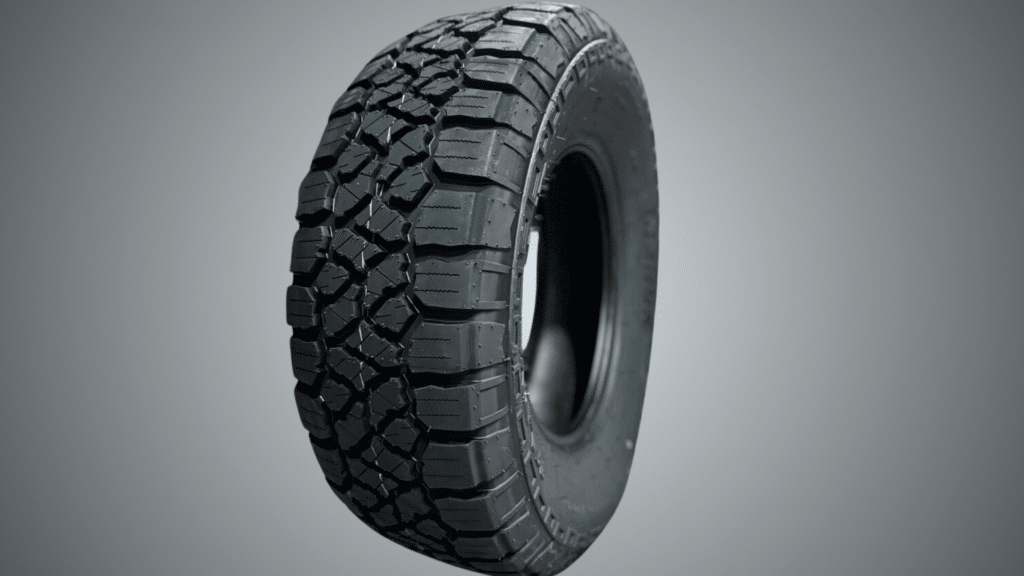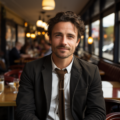Ever stared at those numbers on your tire’s sidewall and felt like you were trying to crack a code?
You’re not alone. 315/75R16 might look like a random string of numbers, but understanding what they mean can save you money, keep you safe, and help you make smarter choices for your vehicle.
In this guide, I’ll break down every part of this tire size without the confusing jargon.
Whether you’re replacing your tires, upgrading your ride, or just want to know what you’re actually buying, you’ll find clear answers here.
Getting the wrong tire size isn’t just about fit – it affects everything from your speedometer readings to how your vehicle handles tough conditions.
I’ll show you exactly what each number means and why it matters to your daily drive.
As someone who’s helped countless drivers pick the right tires, I’ll walk you through everything you need to know about the 315/75R16 size, so you can make decisions with confidence.
What Does 275/60R20 Represent?

Look at the first number – 275. That’s your tire’s width in millimeters, measured from sidewall to sidewall. Think of it like measuring your shoe width.
At 275mm (about 10.8 inches), you’ve got a pretty wide tire that gives you solid traction and stability on the road.
Wider tires like these are common on trucks and SUVs because they provide better handling and a more stable ride.
Aspect Ratio Significance
The 60 after the slash tells you how tall your tire’s sidewall is. Here’s a simple way to understand it: The sidewall height is 60% of the tire’s width.
For your 275/60R20, that means the sidewall is about 165mm tall. A taller sidewall gives you a smoother ride over bumps, while a shorter one makes your vehicle more responsive when turning.
Radial Construction Overview
See that R? It means your tire is radial – the most common type today. Inside the tire, steel cords run straight across from bead to bead (like spokes in a wheel).
This design helps your tire hold its shape better at high speeds and gives you improved handling and fuel efficiency.
Wheel Diameter Compatibility
The last number, 20, is super important – it’s your wheel diameter in inches. This tells you exactly what size wheels this tire fits on. Your 275/60R20 needs to go on a 20-inch wheel, with no exceptions.
If you try to mount it on a different size wheel, you’re asking for trouble. That’s why I always double-check this number when helping folks choose new tires.
I’ve designed this guide to help you understand exactly what you’re getting with a 275/60R20 tire. When you know what these numbers mean, you can make better choices for your vehicle and avoid costly mistakes.
Converting 275/60R20 to Inches
Calculating Section Width in Inches
Let’s turn that 275mm into something more familiar. Divide 275 by 25.4 (the number of millimeters in an inch), and you get 10.8 inches in width.
That’s about as wide as a standard piece of printer paper turned sideways. When you’re measuring your wheel wells for clearance, this is the number you’ll want to keep in mind.
Determining Overall Diameter
Here’s where I do some real math, but I’ll make it simple:
- First, calculate your sidewall height: 10.8 inches × 60% = 6.48 inches
- Double that (because you have top and bottom): 6.48 × 2 = 12.96 inches
- Add your 20-inch wheel diameter: 12.96 + 20 = 32.96 inches total diameter
This total height is crucial when you’re checking if these tires will fit under your vehicle without rubbing.
Understanding Circumference and Revolutions per Mile
Now for something practical – let’s figure out how far your tire travels in one complete rotation:
- Multiply your total diameter (32.96) by π (3.14)
- Your tire’s circumference is 103.5 inches
This means each time your tire makes a full rotation, you’ve traveled about 8.6 feet. Want to know how many times your tire spins in a mile?
Divide 63,360 (inches in a mile) by 103.5. Your tire will make approximately 612 revolutions per mile.
This is more than just interesting math – it affects your speedometer accuracy and fuel economy.
Lower revs per mile usually mean better highway fuel efficiency, but your speedometer might need recalibration if you’re switching from a different size.
Converting 275/60R20 to Millimeters
Section Width in Millimeters
The first part’s easy – your tire is already 275 millimeters wide. That’s the measurement straight across your tire from one sidewall to the other.
Picture the width of a basketball laid flat – that’s pretty close to 275mm. This width gives you a good balance between road grip and handling, especially on larger vehicles.
Sidewall Height Calculation
Let’s calculate your sidewall height:
- Take your width (275mm) and multiply it by 60% (0.60)
- 275 × 0.60 = 165 millimeters
That’s your sidewall height – about as tall as a smartphone. This middle-ground height means you get decent bump absorption without making your steering feel spongy.
When you’re checking tire clearance, remember you need this much space above and below your wheel.
Overall Diameter in Millimeters
Now for the total height of your tire setup:
- Convert your 20-inch wheel to millimeters: 20 × 25.4 = 508mm
- Add both sidewalls: 165mm × 2 = 330mm
- Total diameter: 508 + 330 = 838 millimeters
For perspective, that’s about the height of a standard kitchen counter.
This total measurement is what you need when you’re checking if these tires will fit under your fenders or if you’re comparing different tire sizes.
Remember – even a small difference in millimeters can affect how your vehicle handles and performs.
Mastering the Art of Reading 275/60R20 Tire Size
Breaking Down the Tire Size Code
When you spot P275/60R20 on your tire’s sidewall, each part tells a specific story. The P means it’s a passenger tire (though some might show LT for light truck).
Think of this code like your tire’s DNA – it tells you exactly what you’re working with. Many modern SUV tires skip this letter entirely, which is totally fine – it’s still the same size.
Interpreting Load Index and Speed Rating
After your size, you’ll see something like 114T. Let’s crack this code:
- The number 114 is your load index. For this tire, it means each tire can safely carry 2,601 pounds.
- The letter T is your speed rating – in this case, up to 118 mph.
Never go below the ratings your vehicle manufacturer recommends. Think of these numbers as your tire’s limits – just like you wouldn’t overload a backpack past its weight limit.
Identifying Additional Markings and Their Meanings
Look along your tire’s sidewall and you’ll find more useful info:
- M+S means mud and snow capability
- DOT code shows when your tire was made (like 2023 for ’23’)
- Max PSI tells you the highest safe air pressure
You’ll also see a treadwear number (like 500) – higher numbers mean longer-lasting tread. Next to it are traction and temperature grades (AA, A, B, or C). Think of these like your tire’s report card – they tell you how well it performs in key areas.
These markings aren’t just random – they’re your guide to maintaining safe, effective tires.
Whether you’re shopping for new tires or checking your current ones, knowing these codes helps you make smarter choices for your vehicle.
How Wide Is a 275/60R20 Tire?
Measuring Tread Width
The actual tread width – the part touching the road – is typically around 225-235 millimeters for a 275/60R20 tire. That’s about 9 inches of rubber meeting the road.
Think of it like a football laid sideways – that’s roughly your contact patch. This tread width can vary slightly based on your rim width and tire pressure.
Understanding Section Width
Your tire’s section width is 275 millimeters (10.8 inches), measured at its widest point. But here’s something interesting – this measurement is taken when the tire is mounted on its ideal rim width.
Picture your tire like a balloon – squeeze it on a narrower rim, and it gets taller and slightly narrower. Put it on a wider rim, and it gets wider but shorter.
Impact of Rim Width on Tire Width
Your rim width makes a real difference:
- Too narrow a rim (under 8 inches) pinches your tire, making it perform poorly
- Too wide a rim (over 10 inches) stretches the tire, risking damage
- The sweet spot for a 275-width tire is usually a 9-inch rim
Think of it like wearing shoes – you need the right width for proper support. A 275/60R20 tire on the correct rim width will give you its best performance, handling, and safety.
When mounting these tires, stick to rims within the manufacturer’s recommended width range. This ensures your tires work as designed and wear evenly.
Remember, while the “275” in your tire size stays constant, the actual width touching the road can vary by about half an inch based on your setup. This affects everything from handling to how your tire wears.
Understanding the Sidewall Height of 275/60R20 Tires
Calculating Sidewall Height from Aspect Ratio
The sidewall on your 275/60R20 tire is 165 millimeters tall (about 6.5 inches). Here’s the simple math behind it:
- Take your tire width (275mm)
- Multiply by the aspect ratio (60%)
- 275 × 0.60 = 165mm
Picture stacking two smartphones – that’s about your sidewall height. This moderately tall sidewall gives you a good mix of comfort and control.
Influence of Sidewall Height on Ride Comfort
Your 60-series sidewall acts like a built-in shock absorber. Here’s what that means for your ride:
- Absorbs road bumps and potholes better than lower-profile tires
- Reduces cabin noise and vibration
- Protects your wheels from damage
Think of your sidewalls like the suspension in your running shoes – not too soft, not too stiff. This middle-ground height is why many SUVs and trucks come with 60-series tires from the factory.
Sidewall Height’s Role in Handling and Performance
This sidewall height strikes a careful balance:
- Responsive enough for everyday driving and mild off-road use
- Stable enough for highway speeds without feeling wobbly
- Strong enough to handle heavy loads without excessive flexing
A 60-series sidewall is like having all-around athletic shoes – good at many things rather than specialized for one task.
You’ll notice this most when cornering or making quick lane changes – the tire responds well without feeling too rigid or too soft.
Just remember – proper tire pressure is crucial. Too low, and these sidewalls will flex too much. Too high, and you’ll lose the comfort benefits they provide.
What Rim Size Works Best for a 275/60R20 Tire?

Recommended Rim Width Range
For a 275/60R20 tire, you’ll want a rim width between 8 to 10 inches. The sweet spot is 9 inches – that’s your ideal match. Think of it like a handshake – too loose or too tight just doesn’t work right. With the correct rim width:
- Your tire maintains its proper shape
- The tread sits flat on the road
- The sidewalls align correctly
Effects of Rim Width on Tire Performance
Your rim width changes how your tire behaves:
On a narrow rim (under 8 inches):
- The tire pinches inward like an hourglass
- Less stable during cornering
- Increased risk of rubbing on suspension parts
On a wide rim (over 10 inches):
- The tire stretches too flat
- Sidewalls strain under load
- Increased risk of rim damage
On the right rim (8-10 inches):
- Better road contact
- More predictable handling
- Even tread wear
Ensuring Proper Fitment and Safety
Before mounting your 275/60R20 tires:
- Check your vehicle’s recommended rim width in the manual
- Consider your driving style (highway, off-road, etc.)
- Factor in any suspension modifications
Don’t just focus on what fits – focus on what fits right. Even if a tire mounts on a rim, that doesn’t mean it’s safe. Think of it like wearing shoes – they might go on your feet, but the wrong size will cause problems down the road.
A proper tire-to-rim match does more than just work – it gives you the best performance, safety, and tire life your money can buy.
Decoding the Circumference of a 275/60R20 Tire
Methods to Calculate Tire Circumference
Let’s figure out how far your tire rolls in one complete turn:
- First, calculate the total diameter: 32.96 inches (838mm)
- Multiply by π (3.14) to get the circumference
- Your tire rolls 103.5 inches (2,631mm) per rotation
Here’s why this matters: imagine your tire as a rolling ruler. Each rotation measures exactly 103.5 inches of road beneath you. That’s about the length of a king-size bed plus a nightstand.
Relevance of Circumference in Speedometer Accuracy
Your speedometer counts tire rotations to figure out your speed. With 275/60R20 tires:
- You get 612 rotations per mile
- That’s about 10.2 rotations every second at 60 mph
- If your speedometer was calibrated for different-sized tires, it might be off
Picture your tire like a clock hand – if it’s bigger or smaller than what your car expects, your “time” (speed) reading will be wrong. A larger circumference means fewer rotations per mile, making your speedometer read slower than your actual speed.
Circumference’s Impact on Fuel Efficiency
Your tire’s circumference affects how hard your engine works:
- Larger circumference = fewer rotations = less engine stress
- Each rotation of a 275/60R20 covers more ground than smaller tires
- But they’re also heavier, which can offset some efficiency gains
Think of it like riding a bike with different gear sizes. A larger circumference is like shifting to a higher gear – you go farther per pedal stroke but need more power to turn it.
Understanding your tire’s circumference helps you know exactly how far you’re traveling, how accurate your speedometer is, and what to expect from your fuel gauge.
Exploring Alternate Replacement Sizes for 275/60R20 Tires
Understanding Plus Sizing and Minus Sizing
When changing from a 275/60R20, you have two paths:
Plus Sizing means:
- Wider tread for better grip
- Shorter sidewalls for sharper handling
- Example: 285/55R20 gives you more width but keeps a similar height
Minus Sizing offers:
- Narrower tread for better winter performance
- Taller sidewalls for improved comfort
- Example: 265/65R20 gives you a bit more cushioning
Think of it like buying shoes – sometimes you need running shoes, other times hiking boots. Different sizes serve different purposes.
Common Alternative Tire Sizes
Here are your closest matches that keep your speedometer happy:
- 285/55R20 (slightly wider, shorter sidewall)
- 265/65R20 (narrower, taller sidewall)
- 275/55R20 (same width, shorter sidewall)
Each maintains roughly the same overall diameter of 32.96 inches. That’s crucial because it keeps your speedometer accurate and your gearing unchanged.
Assessing Compatibility and Performance Implications
Before switching sizes, consider:
- Wheel Well Clearance: Check your fenders and suspension
- Load Capacity: Make sure the new size can handle your vehicle’s weight
- Driving Conditions: Think about where and how you drive most
A size change affects:
- Fuel economy (wider tires use more gas)
- Handling response (lower profiles feel sportier)
- Ride comfort (taller sidewalls absorb more bumps)
Remember – just because a tire fits doesn’t mean it’s the best choice. The right size depends on your specific needs, driving style, and vehicle setup.
Conclusion
After working with tires for years, I’ve seen how understanding your tire size can save you from costly mistakes. The 275/60R20 is more than just numbers – it’s your vehicle’s connection to the road.
I’ve broken down everything from its 275mm width to its 60% aspect ratio, and that crucial 20-inch wheel requirement.
Remember, proper tire sizing affects everything: your ride comfort, handling, speedometer accuracy, and even fuel economy.
When shopping for tires, keep your vehicle’s needs in mind. Don’t just focus on what looks good – think about how you actually use your vehicle.
Whether you stick with 275/60R20 or explore alternative sizes, what matters most is matching the tire to your driving needs.
Take your time, check your measurements twice, and never hesitate to ask a professional if you’re unsure. Your safety and satisfaction are worth the extra effort.
Frequently Asked Questions
What Makes the 275/60R20 Different from Other Tire Sizes?
The 275/60R20 offers a balanced width and aspect ratio, providing a mix of comfort and stability, ideal for SUVs and light trucks.
Can I Install 275/60R20 Tires on My Stock 20-inch Rims?
Yes, but ensure your rim width is between 8 and 10 inches (9 inches is ideal). Verify your rim specs before switching.
How Does Weather Affect the Performance of 275/60R20 Tires?
They perform well in dry and mild conditions, but may struggle in deep snow and heavy rain. Hot weather can lead to faster wear.
Will Switching to 275/60R20 Affect My Fuel Economy?
Yes, slightly. These tires are heavier and larger, causing a small decrease in fuel efficiency, though fewer rotations per mile help offset this.
What’s the Typical Lifespan of a 275/60R20 Tire?
Typically 50,000–70,000 miles with proper maintenance. Off-roading or aggressive driving can reduce lifespan, but regular rotation helps extend it.


